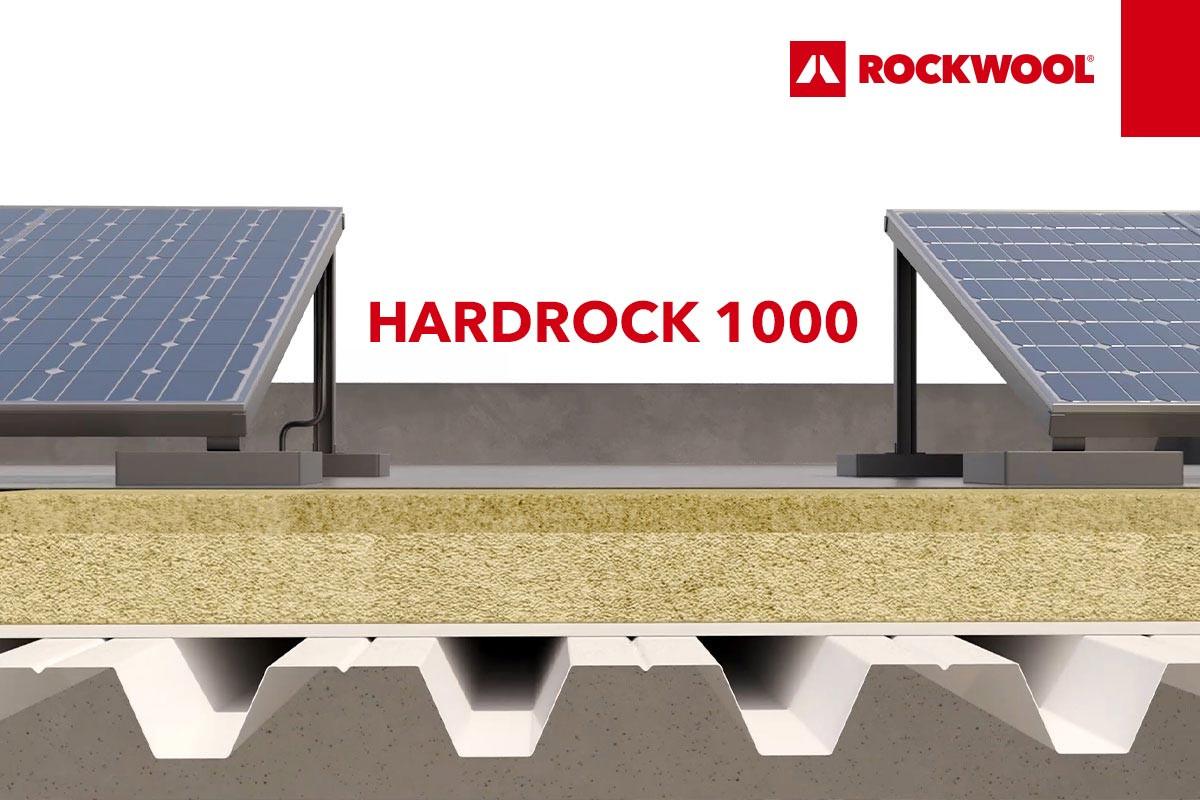Нашето решение?
Монтажът на изолационен продукт в един слой от каменна вата, придружен от подробен CE сертификат за точково натоварване и якост на натиск, не оставя място за съмнение при осигуряването на необходимите характеристики на плоския покрив. Избирайки изолация от каменна вата с дебелина 150 mm и с 1000 N точково натоварване, което да позволи необходимата издръжливост на ходене на покрива за неговата поддръжка и със 70 kpa якост на натиск, осигуряваща цялостния капацитет на натоварване, който покривът трябва да понесе – в този случай фотоволтаичната инсталация – клиентът получава точно тези технически параметри, които са необходими. Плоскостите Hardrock 1000 от ROCKWOOL са именно такова решение.
Качествената изолация за плоски покриви с фотоволтаични инсталации изисква повече внимание от всички участници в процеса – инвеститори, архитекти и строителни инженери, и потребители. Научете повече на специалната ни страница посветена на качествената изолация за плоски покриви с фотоволтаични инсталации или се свържете с нашите експерти за индивидуална консултация.

ROCKWOOL България EООД
бул. „ Драган Цанков” 23 А
1113 София, България
www.rockwool.com/bg
info@rockwool.bg
T +359 2 943 95 60
Investments in PV installations on flat roofs need better insulation design for increased traffic and point loading
In recent years, we have noticed that for many users, a lack of planning and a piecemeal approach has created the need for additional investment in roofs that were thought to be designed and built correctly. This trend gained additional influence in attempts to install photovoltaic installations on flat roofs, whose technological parameters were not designed for such a load. As a result, many investors were disappointed and forced to incur additional costs for new design and/or maintenance of the flat roofs.
What is the problem?
What is very often not considered in the design of the flat roof, and which is the basis of future problems, is the point load indicator of the stone wool insulation.
The main parameter that is wrongly used to make decisions regarding roof insulation materials is the so-called "compressive strength". In general, it is a good enough starting point when talking about the mechanical properties of flat roof products with low traffic intensity. However, the point load is the technical parameter that determines how well the roof will cope with the need for more intense traffic. Experts know that simple technical specifications such as "50 mm thickness of top insulation layer of 70 kPa and 100 mm thickness of bottom layer of 30 kPa" cannot give a real idea of the product's true ability to create conditions for a roof with high resistance to walking.
Sometimes the point load is specified in the product documentation and its value seems large enough compared to the kilopascal (kpa) values. If we look at the above example, the product should have a point load of 600 N, but for the investor or end user, this value and its effectiveness remain unclear. Very often, this point load refers only to the topmost layer of insulation, but not to the full effectiveness of the two layers that are normally installed. The bottom layer can only achieve 300 N and it is obvious that with its greater thickness thus indicated, the overall walking resistance of the roof is miscalculated and barely reaches acceptable levels. This is also the reason why, when installing photovoltaic installations, customers and investors are often disappointed with the durability of the roof and the need for additional repair costs from water accumulation or damage to the waterproofing membranes.
Our solution?
The installation of an insulation product in a single layer of stone wool, accompanied by a detailed CE certificate for point load and compressive strength, leaves no room for doubt in providing the required characteristics of the flat roof. Choosing a 150mm thick stone wool insulation with a 1000N point load to allow the necessary roof walking resistance to support it and with a 70kpa compressive strength providing the overall load capacity the roof must bear – in this case of the photovoltaic installation – the customer receives exactly those technical parameters that are needed. The Hardrock 1000 floors from ROCKWOOL are just such a solution.
High-quality insulation for flat roofs with photovoltaic installations requires more attention from all participants in the process - investors, architects and construction engineers, and users. Learn more on our dedicated page on quality insulation for flat roofs with photovoltaic installations or contact our experts for an individual consultation.
